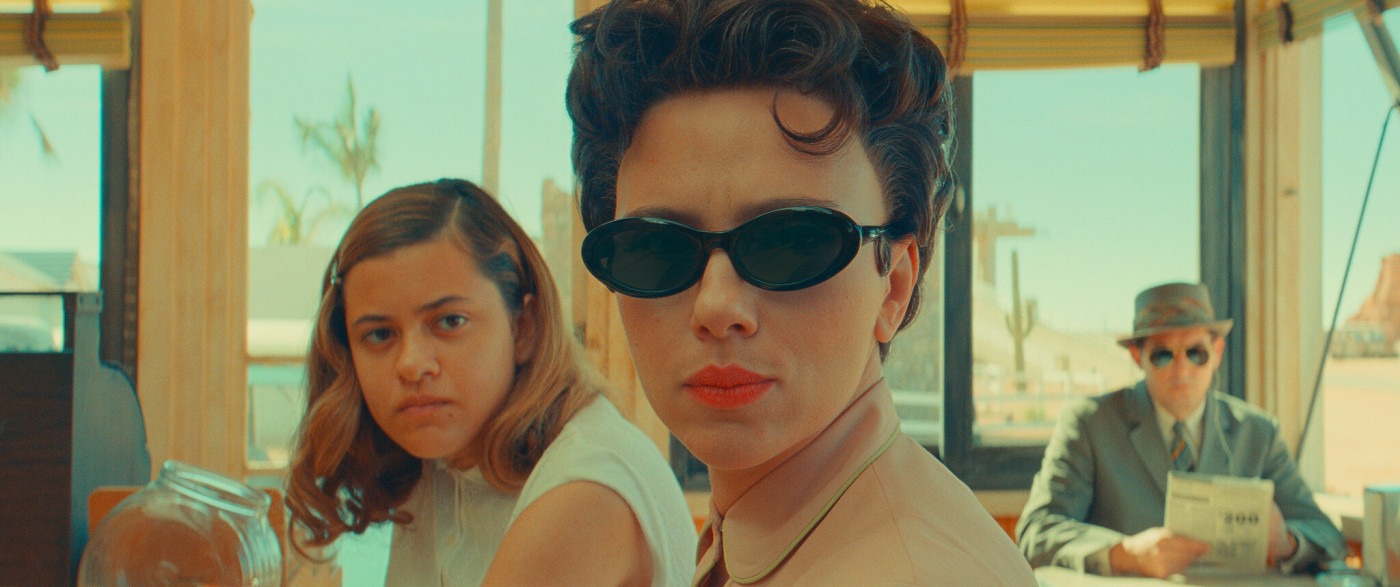‘Asteroid City’ blurs the line between normality and abnormality
Asteroid City, directed by Wes Anderson, is one of this summer’s most highly-anticipated films. Set in 1955, it presents a weird story where a group of talented American students and their parents gather for a scholarly competition in the desert town of Asteroid City. One day, they encounter an alien that steals a fragment of a meteorite. The US government thus places the town under military quarantine in the name of national security. The sudden quarantine not only disrupts the itinerary of the competition but also changes the relationships between the characters. As is par for the course for any Wes Anderson film, Asteroid City boasts an impressive ensemble cast, featuring the likes of Scarlett Johansson, Tom Hanks, and Bryan Cranston.
Typical of Anderson, Asteroid City is a pastel-coloured romp. The highly saturated hues make the scenes look like 1950s postcards and give them a touch of surrealism. While a bright colour tone usually delivers positive emotions, the colour palette of Asteroid City brings a distinctive sense of bitterness. For example, the constant cloudless blue sky and rich crystal orange sand replicate the lifelessness and exhausting experience of living in a desert town. Besides, most characters wear clothes in sharp colours like bubble-gum pink and buttery yellow, but they always feel desperate about their lives. Their sadness seems so overwhelming that they need their bright outfits to sheath their emotions. The visual suppression of the characters’ feelings ironically highlights their inner darkness, leaving the audience with a strong sense of misery and emptiness when the movie ends.
So-called national security measures, especially the quarantine, strikingly remind the audience of the outbreak of Covid-19 in 2020
While the colour tone of Asteroid City contrasts its actual mood, the film’s genre is different from its plot. It initially seems to be a sci-fi movie about aliens and a group of young scientists, but it is actually a dark comedy deriding the crazy period of US history in the 1950s: an era defined by rapid urbanisation and growth of wealth. However, the unequal economic boom resulted in numerous underdeveloped towns in the suburb and desert regions, as exemplified by Asteroid City. These lands, devoid of job opportunities and basic infrastructure, were cheap and attracted many speculators. The increase in land speculation is amusingly presented by the land vending machine in the movie, while the boredom of the people in the desert town is shown by the characters’ monotone facial expressions.
The heated arms race of the Cold War between the US and the Soviet Union is another highlight of Asteroid City. The loud blast of atomic tests always echoes in this little deadly desert town. Shocking to the audience though, the light grey mushroom cloud blends into the desert and the life of local people perfectly. Those living in Asteroid City are so used to the atomic tests that they are indifferent to them. They are also indifferent to the government’s overreaction to the alien, including quarantine of witnesses, control of information, and medical ‘brainwashing’. The line between normality and abnormality is completely blurred.
These so-called national security measures, especially the quarantine, strikingly remind the audience of the outbreak of Covid-19 in 2020. Using the sci-fi plot of encountering an alien, Asteroid City compares two of the nuttiest moments in human history. During both the Cold War and the outbreak of Covid-19, the government launched numerous controversial policies like lockdowns and media blackouts in the name of maintaining social stability.
We are living in an endless whirligig of sleeping and awakening, retreating and emerging, rebelling and being controlled
In addition to the dark side of politics, the Cold War and the pandemic have revealed the fragility of interpersonal relationships. Everyone was forced to stay together during the quarantine period. While the shared loneliness and hopelessness drew people together, it did not necessarily foster strong and everlasting relationships. When quarantine ended and life returned to normal, people just continued with their own lives like what they did before. In Asteroid City, the protagonists, Augie Steenbeck (Jason Schwartzman) and Midge Campbell (Scarlett Johansson) develop a romantic relationship when they are stuck in the town. Yet, after the quarantine is abolished, Midge leaves the town without informing Augie. Everyone in the town returns home on their own as if nothing has happened. People easily build community solidarity during extreme historical moments like the pandemic, but their bonding is so vulnerable.
Asteroid City cruelly conceals the terrible side of the contemporary world. There are autocratic governments killing freedom, and people are not loving or caring for each other. The ‘mise en abyme’ setting, which means inserting a story within a story, further pushes the sense of sorrow to the extreme. In the movie, ‘Asteroid City’ is actually a play. This desert town does not actually exist, and in reality there are no aliens. This setting presents an oppressive government power that can control what their people do and how their people feel, similar to a playwright. In one iconic scene, the actors and actresses of the play Asteroid City stand up, chanting: “You can’t wake up if you don’t fall asleep”. This line seems a bit cryptic, as the idea of awakening is not mentioned in any other parts of the film. However, it artistically summarises the main idea of the movie — we are living in an endless whirligig of sleeping and awakening, retreating and emerging, rebelling and being controlled.
In Asteroid City, Wes Anderson demonstrates a singular balance of his cinematic styles and worldview at large. It is a dark comedy that gives the audience laughter when the plot grows and leaves them with a powerful feeling of grief after the movie ends.

Comments